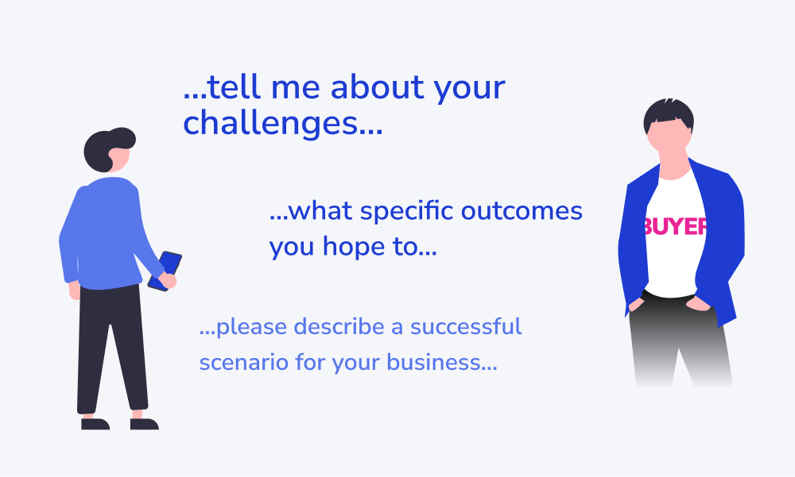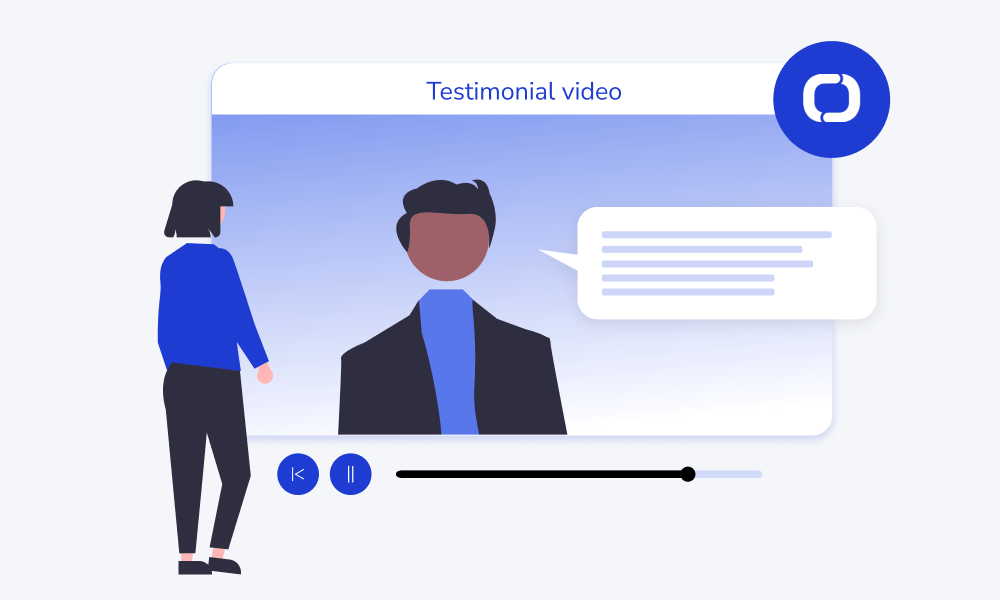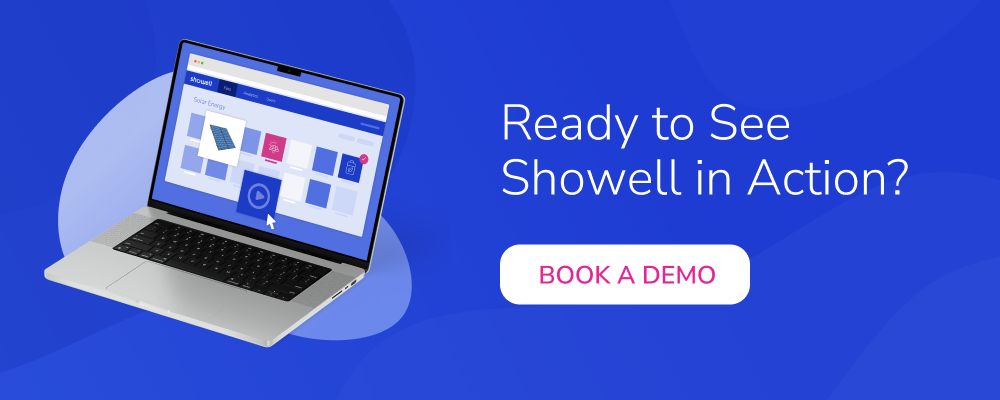In order for your business to compete, how do you differentiate your brand and make your products or services stand out? One of the most effective ways is through the voices of your satisfied customers – customer references.
Leveraging customer references not only authenticates your offerings but also builds trust and credibility, significantly influencing the purchase decisions of potential clients.
What you'll find in this blog:
Understanding the Impact of Customer References
Customer references are an essential part of B2B sales. It is perceived as one of the most useful and valuable types of sales materials for buyers. Prospects are keen to see examples of your previous, relevant successes, and having customers willing to testify to your product’s effectiveness is a crucial signal for any prospective customer.
More than 50% of B2B buyers read reviews to help them make the purchasing decision. Understanding the experience of current customers is very influential.
According to a Gartner survey, B2B buyers value third-party interactions such as reading customer references or reviews 1.4 times more than digital supplier interactions. These third-party interactions provide customers with value affirmation, confirming the effectiveness of your solution.
A recent study by Trustradius found that user reviews are one of the most influential resources for technology buyers. More than 50% of B2B buyers read reviews to help them make the purchasing decision. Understanding the experience of current customers is very influential in the decision-making process.
How to Identify the Right Clients for References
It's important to select the right clients for references. You want to choose customers who have had a positive experience with your product or service and can articulate that experience well.
The best customers to approach are those who have used your products or services to achieve significant results, solve a major problem, or make a positive impact in their industry. These clients most likely fit your Ideal Customer Profile (ICP) and can provide compelling stories that will resonate with your prospects.
Your ICP customers are your best option for reference stories. They most likely have reached the best results with your products or services and their success story will be relevant to your target audience.
Ideally, the customer reference will cover the same pain points, challenges, goals, and objectives that your prospective clients are struggling with at the moment. And it’ll highlight how your solution can solve those specific problems for them.

How to Approach Your Clients for References
So, how do you request feedback from your customers? When approaching clients for references, it's crucial to be transparent about your intentions and respectful of their time.
Explain the purpose of the reference, how it will be used, and the value it will bring to your business. Also, give them the option to review and approve the reference before publication. Remember, your clients are doing you a favor, so show your gratitude.
Use A Feedback Survey As Your Entry Point
You want to highlight your happy customers in your references. What is the easiest way to find those happy customers? Your feedback surveys, of course! Go through the customer responses to your NPS, CES, or any other Customer Happiness measurement and reach out to the most potential prospective references.
Is the customer a repeat customer? Are they heavy users of your product? Are they in close collaboration with your account management and service teams?
In addition to checking the happiness metrics, it would be helpful to talk to the account management and service teams for further information. They can easily guide you in the right direction and will have an idea of who might be willing to be a reference.
Another aspect to take into consideration is other happiness metrics and indicators. Is the customer a repeat customer? Are they heavy users of your product? Are they in close collaboration with your account management and service teams? A lot of this can be uncovered by talking to the responsible teams.
So, to find out who to approach regarding a reference video, check out your metrics first and then talk to the people managing the account. Finally, when reaching out, refer to a recent happiness metric, thank them for their feedback and/or business (depending on the metric you’re referring to) and then ask for the reference.
Your message could look something like this:
| Hey there [customer name], Thank you for taking the time to respond to [your feedback survey]. We appreciate it! We strive to provide a world-class customer experience and your feedback is extremely important to us. It’s great to hear that [their comments about your product/service] and that you’ve found our product/service valuable. Would you be interested in sharing your experience with our prospective customers? It would help us reach other companies that are facing similar challenges as you were. Thank you again for your feedback and do let me know if you’d be interested in being one of our customer success stories. [signature] |
Give Them An Easy Way To Say Yes
Your goal should be to simplify the process for your customer to agree to do the reference video. This involves anticipating and addressing any potential queries they may have from the outset.
Customers typically have three main concerns:
- How much of my time will this require?
- Will I be provided with the questions in advance?
- Will I, or my team, have the opportunity to review and approve the content before it is made public?
If you can proactively address these concerns in your initial request, you increase the likelihood of your customers agreeing to provide a reference.
With this in mind, let’s continue to build on the email template we provided.
|
Hey there [customer name], Thank you for taking the time to respond to [your feedback survey]. We appreciate it! We strive to provide a world-class customer experience and your feedback is extremely important to us. It’s great to hear that [their comments about your product/service] and that you’ve found our product/service valuable. Would you be interested in sharing your experience with our prospective customers? It would help us reach other companies that are facing similar challenges as you were. The only requirement from your end would be a 30-minute virtual meeting for video recording. We would provide all the questions in advance for your approval and ensure you have the opportunity to review everything before it's published. Thank you again for your feedback and do let me know if you’d be interested in being one of our customer success stories. [signature] |
Now the initial message addresses the most likely questions and concerns the customer might have and makes it easier for them to say yes.

Ask For References At Different Stages of the Customer Journey
One method of securing testimonials is to ask immediately after delivering the service. However, such testimonials tend to be more generic, mainly focusing on the working relationship and your responsiveness. A more effective strategy is to request a testimonial once the customer begins to see tangible benefits or return on their investment. When they witness positive outcomes, their testimonials are likely to be filled with enthusiasm and passion.
Typically it takes some time for your customers to see the ROI of your solution. Identify what are the stages where this typically happens. Once you’ve identified the stages where customers typically see the value, you can systematically approach them at appropriate touchpoints for requesting testimonials.
These touchpoints could be for example:
- At the end of the first month
- After three months
- Around six months
- At one year
- Upon renewal
By featuring customers at different stages and from various sectors of your audience, you can create a comprehensive and diverse portfolio of testimonials.
Here’s an example of a message you could send after three months:
|
Hi [customer name], Awesome to hear that you’ve had a great experience with us so far! I wanted to ask if you’d be interested in sharing your experience with our prospective customers. It would help us reach other companies that are facing similar challenges as you were. The only requirement from your end would be a 30-minute virtual meeting for video recording. We would provide all the questions in advance for your approval and ensure you have the opportunity to review everything before it's published. Let me know what you think! [signature] |
3 Key Elements of an Influential Customer Reference
A successful customer reference should include a compelling narrative, a clearly communicated problem and solution, a clear description of use cases, and the impact of the customer's achievement of goals, ideally with KPIs.
It's essential to gather all this information ahead of time so that you can create a compelling and coherent story that speaks to your prospects.
A compelling video testimonial has three simple stages:
- Defining the problem / challenge / objective
- Presenting your product/service as the solution
- Going through the results
Initially, the customer needs to express the challenge they encountered that led them to seek your product. Following that, they can discuss how your product served as the solution and its impact on their business. Lastly, they should underscore the results achieved by integrating your product into their business operations.
By adhering to these three steps, you create a complete narrative that results in a succinct and captivating video testimonial. You can add additional steps, but they have to provide value to the viewer.
Here is an example of a great testimonial that has a couple of extra stages that are valuable to the audience: Asendia video.
Let’s unpack why this customer reference works:
✅ It introduces the customer's business. The person viewing the video knows exactly if the customer’s industry is relatable to their own business.✅ It clearly states the challenges the customer was facing. Once again, something the viewer can relate to.
✅ They explain how they were able to solve those problems with the product.
✅ The use case is clearly defined. This helps the audience understand how the product helped the customer overcome the challenges they mentioned in the beginning.
✅ They explain how easy it was to get started with the product. This can be extremely powerful, as buyers are often worried about long and complicated implementation projects.
A well-crafted customer reference or testimonial offers a compelling narrative, a clear problem-solution explanation, and measurable outcomes. Now that we’ve done the video, where should we put it?
How to Leverage Your Customer References
Customer references should be leveraged across all your marketing channels, including your website, social media, and during sales interactions. They can be used in case studies, testimonials, reviews, or success stories.
Make the testimonials easy to find
Customer testimonials can be used in various stages of your customer journey. A reference video can have a huge impact on a prospective customer researching your solution so make it easy for them to come across those testimonials.
Keep in mind that 72% of buyers would prefer a rep-free experience (Gartner), so it’s essential that they can find relatable success stories on your website and social media channels.
Of course, there are also plenty of buyers who want to interact with sales. Once your prospective client is ready to talk to sales it’s easy for your team to provide relevant references for the prospect.
They can use their knowledge of the prospect to deliver a relatable customer reference video, a story from a similar business facing similar challenges.
Where to store the videos and how to distribute them to prospects?
You can store the reference videos, for example, on YouTube or Vimeo, or a similar online video platform, where they are easy for your sales team to share with your prospects.
These platforms, however, don’t give insights or clear indications of an intention to buy to the salesperson - the salesperson won’t even know if the prospect viewed the video or not.
You can use a sales enablement platform, like Showell, to store your customer reference videos (among other sales and marketing collateral). When all of your customer-facing material is organized in a single location, it is easier for your sales team to find relevant content.
Better yet, these platforms allow your team to create Digital Sales Rooms for their prospects and track how they interact with the material.
|
👍 Make it easier to buy by centralizing all relevant sales materials for your buyers in a branded, personalized, and trackable digital environment. Explore Showell's Digital Sales Room. |
Conclusion
Customer references are a powerful tool in B2B marketing. They not only validate your offerings but also build trust and credibility with your prospects. By using the strategies and tips in this guide, you can harness the power of customer references to differentiate your brand and boost your sales.
Don't forget to use the examples to help you approach your customers and create compelling customer references that will resonate with your target audience!
Learn next:





